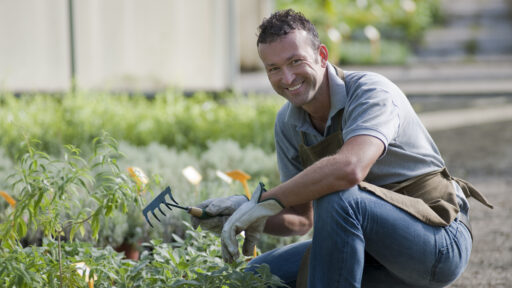Pruning is a crucial task for maintaining the health and appearance of your plants and trees. While it may seem counterintuitive to cut back your plants, pruning actually encourages them to grow back stronger and healthier. But how do you know when and how to prune your plants?
Let us teach you the basics of pruning, including what it is, why it’s important, and how to do it effectively. Whether you’re a seasoned gardener or just starting out, this guide will provide you with the knowledge and skills you need to keep your plants healthy and thriving.
What Is Pruning?
Pruning is the process of trimming branches or stems from your plants or trees to improve their health, increase the number of blooms, and shape them to fit your garden space effectively. It involves cutting out diseased, damaged or dead branches, thinning out growth to allow bottom branches to get sunlight, keeping unwieldy branches from blocking pathways, and cutting away branches that might be prone to disease. Pruning is an important practice that helps maintain the overall health and appearance of your plants and trees.
What Tools Do You Use to Prune Plants?
When it comes to pruning plants, having the right tools can make all the difference. Different types of plants require different tools for pruning. Here are some tools you should consider having in your arsenal:
- Bypass Pruning Shears: These scissors-like tools are perfect for small shrubs and plants. They can handle branches under an inch wide.
- Hedge Shears: These shears have thick handles and long, scissors-like blades that are used to shape shrubs.
- Lopper: This tool has a long pole with a blade attached and is great for cutting larger and hard-to-reach branches.
- Pruning Saw: This saw has a long, curved blade and can be used for branches closer to the ground.
It’s important to keep your pruning tools clean to prevent the spread of diseases. You can clean your tools with bleach, isopropyl alcohol, or hydrogen peroxide. If your plants are healthy, you can clean them as needed, but it’s recommended to clean them at least once per year. If you’re pruning off unhealthy parts of a plant that are infected with powdery mildew, blight, or other common plant pests, you should clean them before moving on to healthy parts of the plant or other healthy plants to avoid spreading the disease.
How to Prune Plants
Get the Timing Right
Pruning plants is a crucial part of maintaining their health and appearance. However, it’s essential to prune at the right time to avoid damaging your plant. The optimal time for pruning and deadheading your plants and trees depends on the particular plant or tree.
You can remove dead or diseased branches whenever you see them and spent and dead blooms to help your garden look gorgeous. Pruning instructions can vary within a plant type, so you’ll want to look at what’s suggested for your particular garden plants to ensure that your plants thrive.
Many plants should be pruned in late winter or early spring to help promote new growth. During the summer, you’ll likely only need to deadhead spent blooms on flowering bushes and plants or prune back plants that are done blooming for the season.
One time when you should avoid pruning is the late summer to fall timeframe. New growth created then may not be hardy enough to survive the winter, and any cuts may not have time to heal, leaving your plant open to disease.
Start Small
Pruning can be intimidating, especially if you’re new to it. It’s best to start small and work your way up to more significant cuts. Remember, you can always go back and trim more afterward.
Trim the Obvious Branches First
The first cuts are pretty obvious. Look for dead or damaged branches, yellowed or dried-out leaves, and spent blooms. Next, examine the structure of the plant. Look for uneven areas of growth that feature too many branches, where you may want to thin out the plant to allow sunlight to reach the lower parts of the plant. Branches that overlap and rub against each other should also be trimmed to avoid wear spots that can allow pests or disease to infiltrate your plant.
Again, follow your individual plant’s pruning requirements. Some plants require significant pruning almost to the soil line, while others require cutting back a third of the growth.
Get the Cut Spot Right
When pruning, you want to cut back to a growing spot, such as a leaf node or where another branch forks off from the branch, or down to the soil line. Avoid leaving stubs, as they can be an entry point for disease and pests. Also, be sure to use sharp and clean pruning tools to avoid damaging the plant.
Identify the Plants that Need Pruning
Regular pruning is essential for many garden plants to maintain their health and appearance. Here are some common plants that require pruning and the best time to do it:
- Butterfly Bush (late winter or early spring)
- Crepe Myrtle (late winter)
- Forsythia (late spring)
- Fruit trees (mid-winter)
- Hydrangea (spring for mop-head hydrangeas, summer for lacecap hydrangea)
- Lilacs (spring after blooming)
- Perennial Flowers (generally after the bloom season is done, but check your variety)
- Roses (depends on the variety)
By pruning these plants at the right time, you can promote healthy growth, increase flower production, and prevent disease. Remember to use clean, sharp tools and make cuts at a slight angle just above a healthy bud or branch. Happy pruning!
Which Plants Only Need a Gentle Trim?
If you’re looking for low-maintenance plants, there are several species that don’t require regular pruning to stay healthy. Here are some examples:
- Spotted Laurel
- Creeping Juniper
- Deciduous Azalea
- Holly
- Manzanita
- Myrtle
Feel free to let these plants grow naturally, unless you need to trim back branches that block pathways or other plants, or there’s a branch or bloom that’s dead or shows signs of disease. Keep in mind that pruning can be beneficial for shaping purposes or to promote new growth, but it’s not always necessary for the health of the plant.






